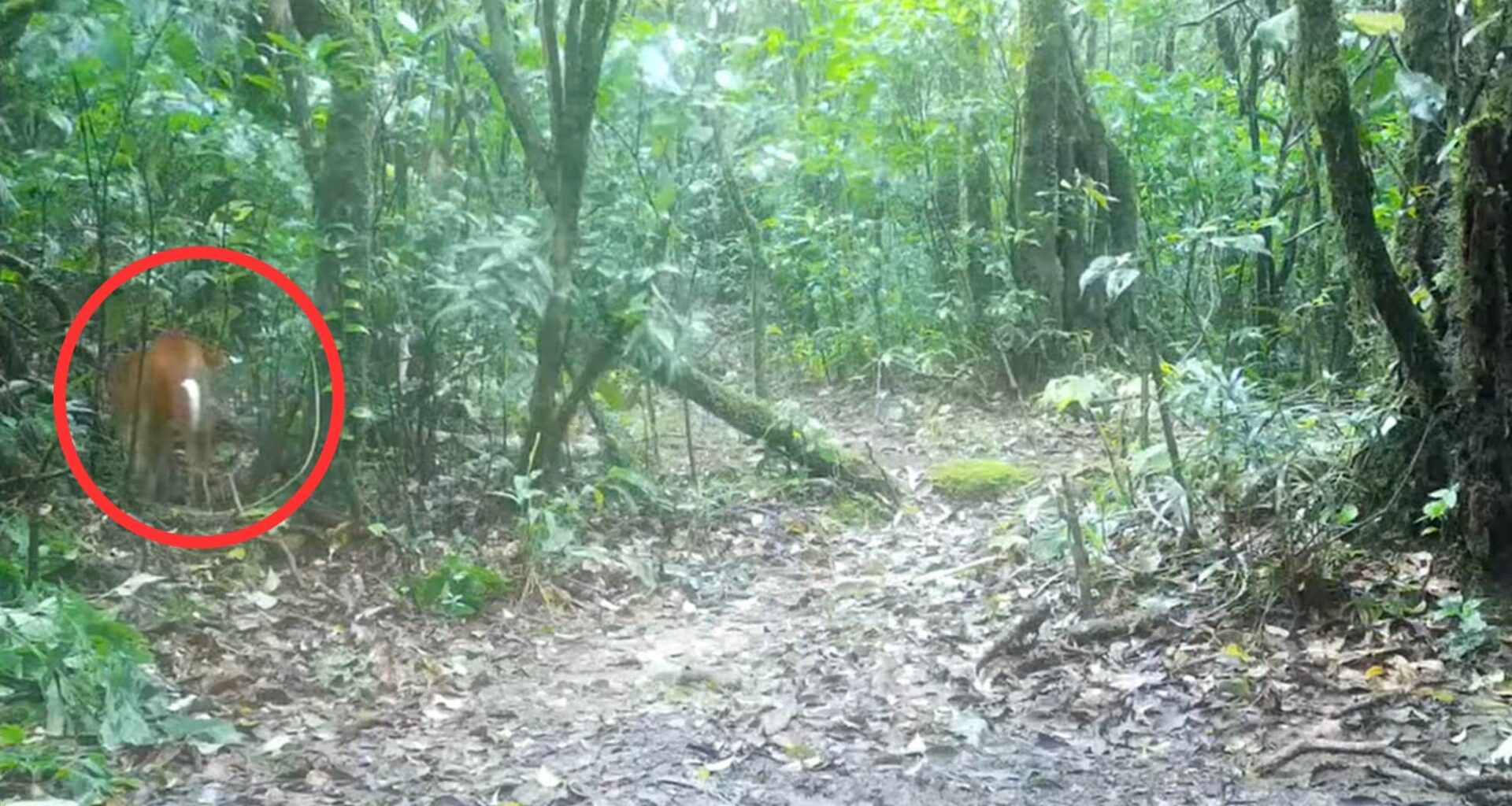In the dense forests of southern Thailand, an extraordinary and rare creature was captured on a trail camera. On June 20, wildlife patrols in Khao Luang National Park were reviewing their monitoring footage when they discovered a brief yet striking clip of an Asian golden cat walking along a sunlit trail. The footage, which lasted only 10 seconds, revealed a stunning animal steeped in local folklore. This discovery highlights the ongoing conservation challenges facing this elusive species, which is classified as vulnerable due to hunting and habitat loss. The Asian golden cat’s appearance in this area has piqued the interest of both wildlife experts and those fascinated by local legends.
The Asian golden cat, scientifically known as Catopuma temminckii, is not a common sight in many areas of Southeast Asia. Despite being native to the region, these medium-sized felines are known for their secretive and solitary nature. They roam territories largely in isolation, making it difficult to study their behaviors and populations in the wild. As a result, the recent footage from Khao Luang National Park represents an important moment for both wildlife monitoring and the broader understanding of this elusive predator’s life.
What Makes the Asian Golden Cat So Special?
The Asian golden cat is recognized by its distinctive tan fur, which gives it the appearance of a golden-hued predator. It is a fierce and capable hunter, able to take down prey significantly larger than itself, such as deer and other mammals. This adaptability and strength have earned it a fearsome reputation among the wildlife of Southeast Asia. However, despite its formidable hunting skills, the species tends to remain hidden, avoiding human interaction and seldom making appearances in areas frequented by tourists or wildlife enthusiasts.
These cats are classified as territorial, with each individual marking its domain, and solitary, typically only coming together for mating. Their elusive nature contributes to the challenge of studying their populations and behavior, which is one of the reasons their conservation status is so concerning. As vulnerable species, they face a high risk of extinction if conservation efforts are not intensified. Logging, poaching, and habitat destruction are all factors threatening their survival, with many of the animals’ natural habitats being degraded or lost to human development.
The Folklore and Mythology Behind the Asian Golden Cat
The Asian golden cat is more than just a creature of the wild—it is also a symbol in various cultures and mythologies across Southeast Asia, particularly in Thailand. The animal is known locally as the “Seua fai”, or “fire tiger,” a name that invokes the image of a powerful, fiery beast. According to legend, the fur of the Asian golden cat is believed to have mystical properties. It is said that the burning of its fur can drive away tigers, which adds to its mystique and importance in local traditions.
The connection between the Asian golden cat and tigers is particularly notable. Both species are apex predators, and the mythological idea that one could repel the other emphasizes the respect and fear associated with these animals in regional folklore. In a world where modern science and ancient legends often intersect, the discovery of a real-life Seua fai in the wilderness underscores the ongoing link between nature and culture.
Conservation Efforts and the Future of the Asian Golden Cat
As the Asian golden cat faces increasing threats from human activity, conservationists have turned their attention to the animal’s dwindling population. In Khao Luang National Park, efforts to monitor and protect local wildlife are part of broader initiatives aimed at preserving habitats for endangered species. However, despite these efforts, habitat destruction and illegal hunting remain significant hurdles in the battle for the species’ survival.
The park, which spans across an area of rugged terrain in southern Thailand, offers a critical sanctuary for many rare and endangered animals, including the Asian golden cat. As part of its conservation strategy, the park employs trail cameras to monitor wildlife and track their movements, as seen in the footage that captured the recent sighting. These cameras are part of a larger effort to collect data on the park’s biodiversity and assess the health of its ecosystems.
